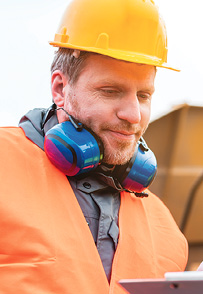Top 12 learnings mined from a year of all-electric and zero-emission exploration


A full year has passed since ABB launched it eMine framework of methods and solutions to make the all-electric mine possible. Their experts share 12 insights from 12 months of fruitful learnings and most importantly how they see the journey moving forward.
A study by McKinsey, “Creating the zero-carbon mine,” reports that to achieve a 1.5°C climate-change target by 2050, the mining industry will need to reduce direct carbon dioxide emissions to zero.
Researchers from GlobalData interviewed senior managers at 139 mining sites about emissions reduction plans. Over half of the respondents saw the greatest potential for electric vehicles. In the short term, their strategy mostly revolves around the use of renewable energy, assisted by diesel displacement efforts to equipment powered by electric batteries or fuel cells.
The mining sector is committed to ESG, but more action is needed. In this past year, ABB experts have garnered learnings that they transformed into forward-looking insights to accelerate the transformational drive across the mining sector.
1 More minds lead to better mines.
To speed up the development of carbon-reducing technologies, ABB is convinced that the solution lies in creating strategic pools of miners involving different technology providers who can look at miners’ requirements and work together to bring forward the right solutions.
Strategic collaboration between miners having the same interest will help push the technology development between technology providers and accelerate the adoption of carbon-reduced and finally carbon-free solutions.
By creating open and collaborative platforms combining the industry stakeholders and technology suppliers, miners can have access to a pool of solutions, which they can push into their conceptual studies. They can also collaborate with peers across the industry value chain and gain access to additional ideas and innovative solutions.
They can influence the supplier ecosystem, shape policy and share their experience and learnings.
2 Made for you, works for all.
Miners want to have an agnostic solution that is not bound to one technical, proprietary offering. We want to make it as easy as possible to integrate the interoperable systems for customers.
Thus, joint development and co-creation play a crucial role in leveraging the domain expertise of key partners to create interoperable solutions, meeting a wider range of needs. Continuous alignment of key technical suppliers will favor the establishment of industry standards.
This calls for a more open working culture, a desire to change, embracing new technologies and widening the skill set to actively manage change and innovation.
3 A single journey is only a series of well-planned steps.
It is becoming clear that the process of electrifying the entire mining ecosystem will not happen overnight and needs to happen in phases. An electric mine looks different from a traditional mine. ABB is working with miners to break down this long-term roadmap into short-term actionable projects, piece by piece, to gradually transform their operations.
A phased approach enables mines to immediately lower carbon footprints with a limited up-front capital investment, while simultaneously advancing progressively as technology becomes more mature, scalable and cost effective.
4 Getting in early is better for later.
To implement electrification, getting involved from an early stage is necessary to conduct the critical technology, economic, geographic, regulatory and cultural assessment through comparative simulations studies, allowing us to understand a particular mining operation, provide guidance for strategic project decisions, and customize the best fit for a particular mining operation.
Electrification systems are further enhanced based on real data while initiating triangular collaboration with different players depending on the needs, including technology providers, investors, service providers, consultants, EPC/EPCMs, and OEMS.
5 Renew your approach to mining. And the energy involved.
With mines opening in remote areas, located far from grid systems, the mining industry will rely more and more on renewable energy to drive its green development. Therefore, the integration of renewable energy is an indispensable part of the ecosystem and needs to be embedded in the mine design.
This is confirmed in the GlobalData report, showing that renewable electricity is rising in the mining industry. Teck Resources is one of the leaders in this report with 88%. Some companies benefit from renewables in the national electricity mix of the countries where their mines are located, reports GlobalData. Others are investing in on-site renewable power, such as solar power plants, to be less dependent on fossil fuels.
6 A modern mine is only as strong as its energy supply chain.
Building an all-electric mine also requires the supply of fossil-free energy and the implementation of storage systems to mining locations which are sometimes very remote.
In addition, achieving the successful implementation of electrification solutions (RE+SS) depends on the stability and reliability of power system equipment. Equipment powered by green energy requires different techniques and significant changes to the energy supply chain infrastructure.
7 To improve anything, you must see everything.
A holistic approach is crucial to maximizing performance and productivity. In the case of zero-emission mining, thinking holistically means integrating electrification with automation and digital systems, with the following requirements in mind:
> Continued development and innovation of new technologies such as charging, trolley, BESS, driving standardization
> Optimized and balanced grid design for new requirements
> Open communication standards for multi-vendor integration of fixed and mobile assets aggregated via one platform
> Real-time data acquisition, processing and visualization
> Advanced analytics to improve operation and availability of assets
8 Addressing tomorrow’s challenges requires today’s courage.
Many of the technologies enabling this paradigm shift toward an all-electric mine are still at the prototype stage and getting them from lab to mine will require patience and a new mindset.
While safety must remain the priority, the traditionally risk-averse culture of mining must embrace a new commitment to support and shape the development of emerging technologies. Tackling the initial investment hurdle will open doors to piloting new technologies and giving rise to better solutions without impacting the operational goals.
9 Trolley systems will carry mines forward.
We believe in this technology which has been in existence for decades and which is now back as a key technology for mining in recent years.
Trolley system is being constantly evolved and enhanced to be fit for mining operations. We are continuously improving the system, based on learnings and technology developments, considering evolving requirements from the truck manufacturers, the power infrastructure, and the mines.
ABB delivered a complete open pit trolley-assist solution to Copper Mountain Mining mine, located in southern British Columbia near the town of Princeton. This project is aimed at cutting carbon emissions at the mine by at least 30%. Trucks run with 80% speed increase, ensuring higher performance.
10 Faster, more powerful charging for faster, more powerful trucks.
Ramping up the speed and efficiency of the power supply is important to keep the vehicle downtime during charging to a minimum while optimizing battery design and maximizing productivity. ABB’s pilot solution eMine FastCharge has kickstarted with 600 kW, the highest power available on today’s market, but the company is working to deliver higher power to fit the demand of mining hauling trucks. ABB is continuously pushing the boundaries of technology accommodating higher charging powers by collaborating with industry experts, key technology suppliers and standardization bodies.
ABB in collaboration with technology partners piloted eMine FastCharge as a stepping stone to pave the future of fast charging solutions across the mining sector. Based on open charge communication protocols, fully automated and modularly designed, FastCharge is future-ready to accommodate higher charge powers for any truck.
11 Mining a new workforce is crucial.
Industry insights and media reports have highlighted how the mining industry is facing a major skill shortage as environmental concerns deter the new generation of Gen Z workers. Establishing a sustainable future for mining requires creating an environmentally conscious workplace with a socially responsible image as the new generation of Gen Z talents will steer towards environmentally friendly corporations.
Therefore, mining companies must demonstrate their sustainability credentials to the next generation for whom climate change and ethical business practices are key differentiators rather than just a feel-good factor. Shedding the image of ‘If you want to have an impact, mining is the right place to be,’ is crucial in attracting young talents that will ultimately secure the future.
12 For your world, and mine.
Energy transition and the green revolution starts in a mine. No mines, no electric cars. Enabling the devices and infrastructure that support a clean and connected life are the things that often remain unseen, all made possible by minerals and metals extracted from the earth.
As the need for more metals and minerals continues to rise, the challenge for the industry lies in having to reduce its emissions while ramping up production of critical minerals to fulfill the needs of modern lives.
We believe digitally enabled electrification systems of the entire mining ecosystem is the way forward.
ABB is committed to working with its many mining customers to ensure this happens to the benefit of the environment and future generations.
You want to understand just how critical the mining industry is, the challenges it faces and how ABB is making a world of difference there? Listen this episode of ABB Process Automation podcast.
Innovation follows collaboration
The future of electrification requires a paradigm shift to embrace new, higher-risk technologies.
The mining industry is still risk-averse and conservative, contributing to a conventional and traditional value chain. We need to instigate a culture where supplier relationships are not seen as zero-sum. We need to see in collaboration mutually beneficial opportunities with the potential to maximize value for all stakeholders. A more open perspective around the role of suppliers as strategic partners expands the possibilities for miners to benefit through innovation, cost reduction and competitive advantage. In the case of electrification, miners are clear that they can’t go it alone.
Max Luedtke is global head of mining, process industries at ABB.





Comments